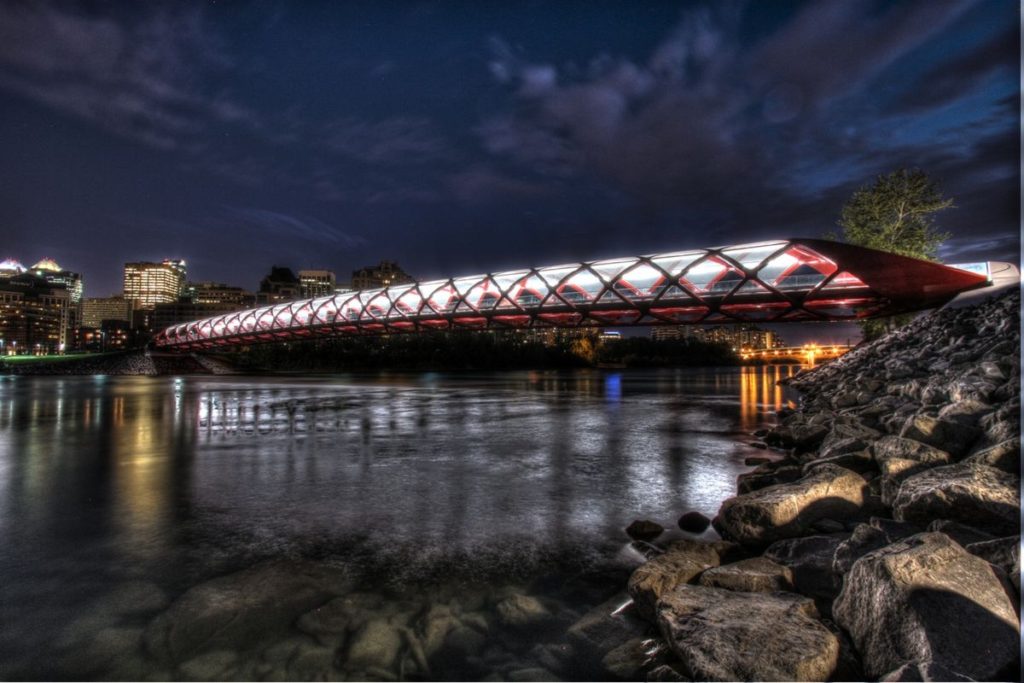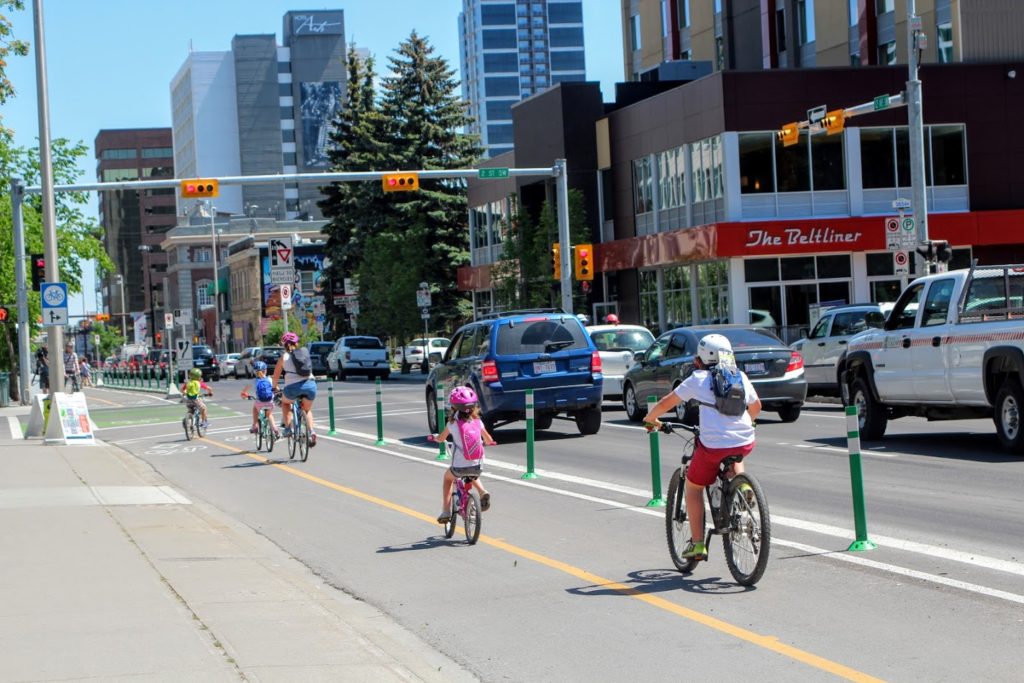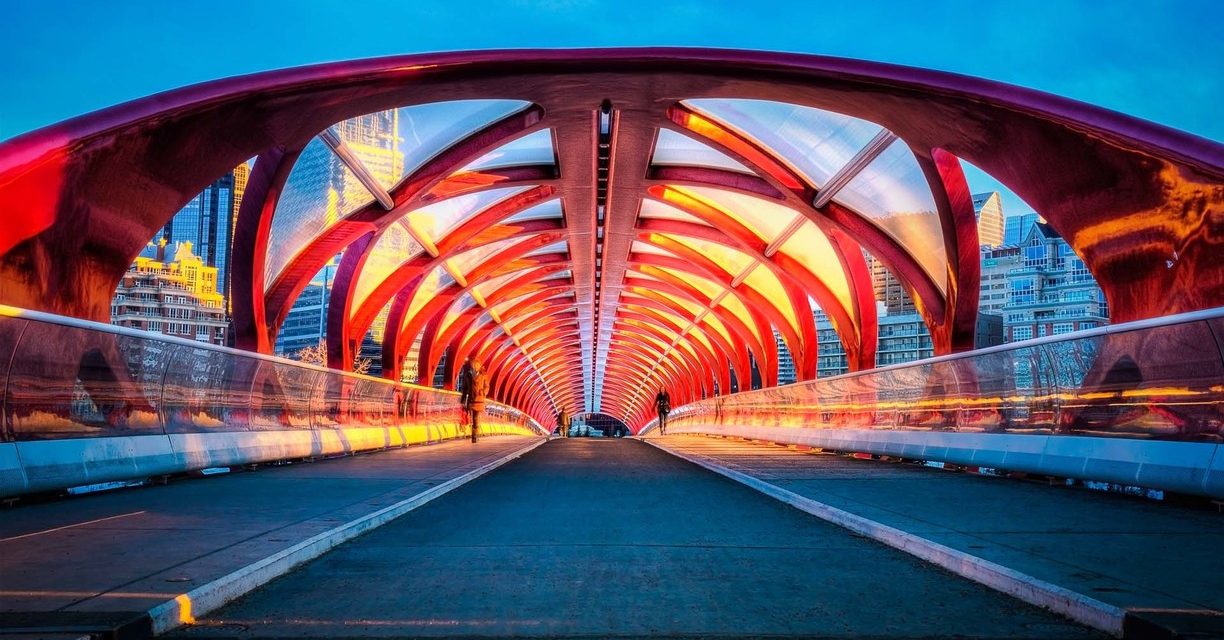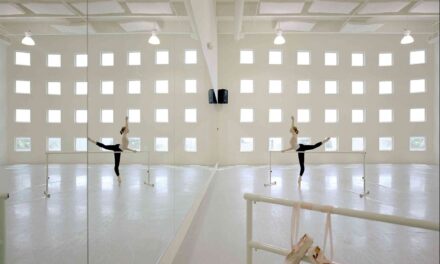Credit: Trover
In recent years, we have seen a shift in how people get around their cities. Studies across the world report that people, on average, do not get enough exercise and are living unhealthy, sedentary lifestyles. Given the proportion of people who work desk jobs, this unfortunate statistic isn’t all that surprising.
Turning the Tables
Some cities, however, are hoping to promote change among their population. In 2012, Alberta’s largest city, Calgary, made a massive push in the right direction. Being that the city is eight times the size of San Francisco, traffic has become a massive point of contention among its 1.4 million citizens. Frustrated by a lack of options, they began to demand alternatives to their conventional mode of travel. There has always been the option to bike or walk to work. However, the city’s existing roads and bridges are entirely unwelcoming for pedestrians and cyclists.

Credit: Tourism Calgary
This is where the Peace Bridge came in. Born from a 2007 Centre City Plan that eliminated future plans of new motor vehicle transports, the board instead identified three locations where a bridge could be built, so long as they were dedicated to pedestrian and bicycle transport.
Push Back
It didn’t matter that renowned, Spanish architect Santiago Calatrava was signed on to design the bridge. It didn’t matter that the plans were beautiful. Many Calgarians couldn’t think of the positives ahead. They simply saw the $24.5 million budget and construction zones—and it resulted in massive backlash. “If we wanted beauty, we’d travel to Paris. In Calgary, we just need it to work,” one irate citizen said.

Credit: Wikipedia
“If it had been for vehicles, we would not have had any debate, and it would not have been controversial,” councilor Druh Farrell, one of the heads of the project, says. “…Now I think most Calgarians would recognize it was worth it.”
Outweighing the Angry with Positives
In spite of angry messages and even the need for body-guards at the ribbon cutting, the pay-off of the bridge definitely shines. It has become one of the most-travelled walking and cycling routes in the city, promoting community and healthier lifestyles. The Peace Bridge has also inspired citizens to talk about the beauty of architecture, while simultaneously serving as a meeting space for friends and families.

Credit: Sacramento Area Bicycle Adventures
Upon realizing the desire for more lanes of walking and cycling, the bridge has served as a catalyst for the city. Since its opening in March of 2012, the city has invested in and completed a “downtown cycle-track network,” a separate lane of traffic divided by a median specifically for bikers.
It wasn’t until these lanes and bridges were built that the city of Calgary realized just how deep seeded their need was. Perhaps we all have an innate desire to live a healthier lifestyle that is waiting to be recognized.




